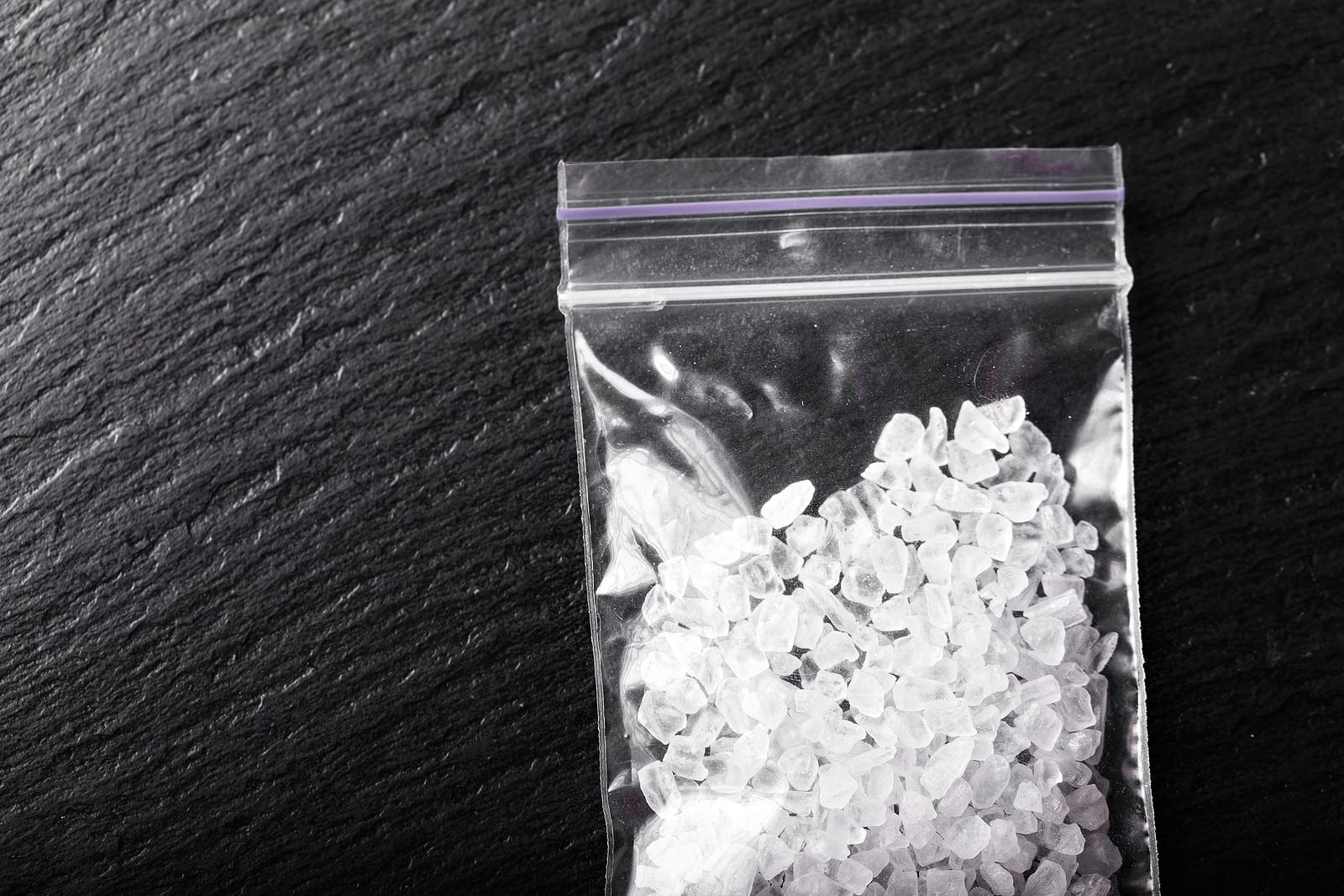
Methamphetamine, often known as crystal meth because of its shard-like appearance, is an illegal but widely used stimulant drug with a high potential for addiction. While in theory it is possible to use crystal meth just once and never use it again, the nature of the substance makes this extremely difficult. Not only is the drug inherently addictive, but the high it offers is quite short-lived. When most people consume crystal meth, they do so by repeatedly dosing themselves so that they can stay high for an extended period of time. This pattern, referred to by addiction specialists as “binge and crash,” is likely to lead very quickly to physical dependence. When users decide to stop their binge, or, more likely, when they’ve run out of methamphetamine, a period of withdrawal is likely to set in. During this time, cravings for meth, which is the only “cure” for withdrawal aside from waiting in anguish, can be difficult to resist. Even though some people do indeed manage to use meth just once, even one use of meth is very likely to lead to physical dependence and ultimately addiction.
Methamphetamine use is an enormous problem in the United States, where approximately 11 million Americans have consumed meth at some point in their lives. According to the Drug Policy Alliance, approximately 0.2% to 0.3% of the country’s population uses meth multiple times a month on a regular basis. 1.3 million people in the United States have used crystal meth in the last year. These numbers have remained relatively steady since 1999, with no signs that crystal meth abuse is abating.
People use crystal meth for a variety of reasons, ranging from recreational pleasure to more practical performance-enhancing reasons. Methamphetamine increases users’ energy and activity levels, offers a feeling of euphoria and general well-being, and decreases the need for sleep and food. While recreational users may enjoy meth because of the high it provides, populations that normally do not habitually abuse drugs are also vulnerable to methamphetamine abuse. Methamphetamine has been marketed and used as a weight loss tool, a way of enhancing athletic performance, and as a way for truckers to stay awake and focused at the wheel for long periods of time. Like amphetamine, a related drug, some people use methamphetamine because it makes them feel more inspired and effective at work. Over time, individuals who use methamphetamine for pleasure or for productivity often develop a physical and psychological dependence on the drug that leads to addiction.
Methamphetamine addiction, as well as addiction in general, is often hard for individuals suffering from it to recognize. However, even for individuals who successfully manage to hide their substance abuse habits, certain symptoms are likely to become apparent. Signs of a substance use disorder include:
Like cocaine or amphetamines, crystal meth is a stimulant. Over the short term, users experience a range of effects, among them:
These effects fade quickly, and unless users consume more meth very soon after the initial dose, most begin to experience the initial symptoms of meth withdrawal after only a short period of time. These symptoms include fatigue, depression, anxiety, psychosis, and strong drug cravings. Users who binge meth often experience these symptoms for days at a time and they can find it very difficult to function normally.
An individual who uses crystal meth for long periods of time does considerable damage to their body, brain, and central nervous system. Smoking or injecting methamphetamine exposes users to distinct risks. Those who inject meth, for instance, are at a higher likelihood of contracting infectious diseases and blood borne illnesses like HIV and hepatitis B and C. Over the long term, meth can produce a wide range of conditions including dangerous weight loss, severe dental problems (often known as meth mouth), paranoia, hallucinations, psychosis, intense itching leading to skin sores, and a variety of mental health problems such as anxiety, memory loss, and sleep disturbances. Prolonged drug addiction and substance abuse involving crystal meth actually produces irreversible changes in the brains of users. Meth damages the brain’s dopamine system, making it not only more difficult to resist the temptation to abuse meth, but also impairing coordination and verbal learning.
While it is in theory possible to use crystal meth just once, most users end up developing debilitating addictions. If you are ready to seek treatment for a crystal meth addiction, it is usually best to withdraw under medical supervision at a detox center. Attending an inpatient or outpatient treatment center afterwards can help individuals develop the skills and coping methods they require to avoid relapse over the long term. Treatment facilities and aftercare programs usually involve a range of treatment modalities, from cognitive behavioral therapy to social support groups. While methamphetamine can destroy lives even after just one use, reaching out for help is often all it takes to begin the process of getting sober and rebuilding ones life.
